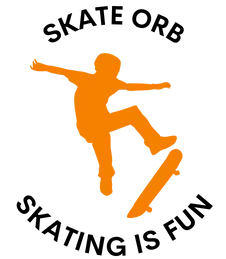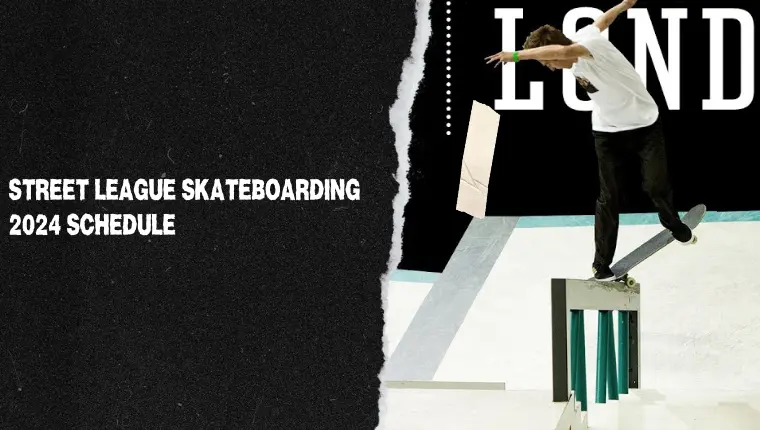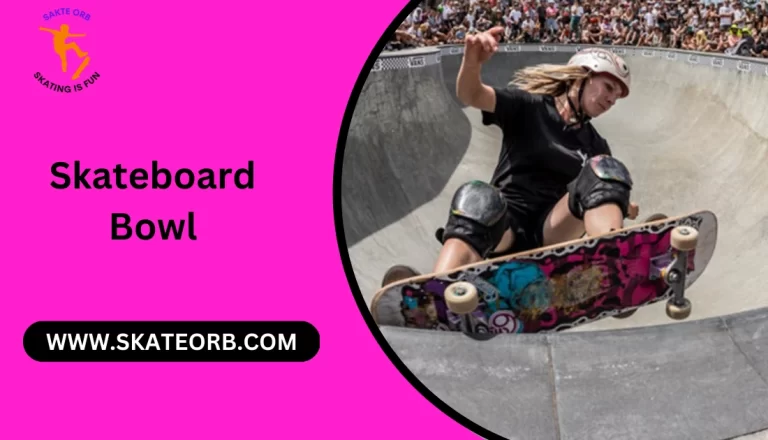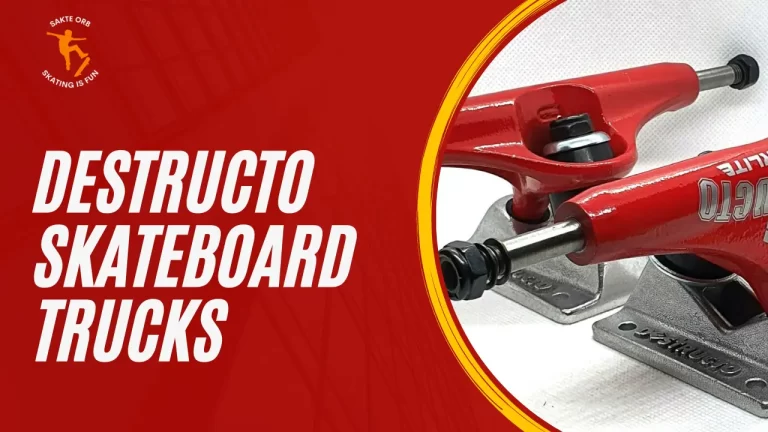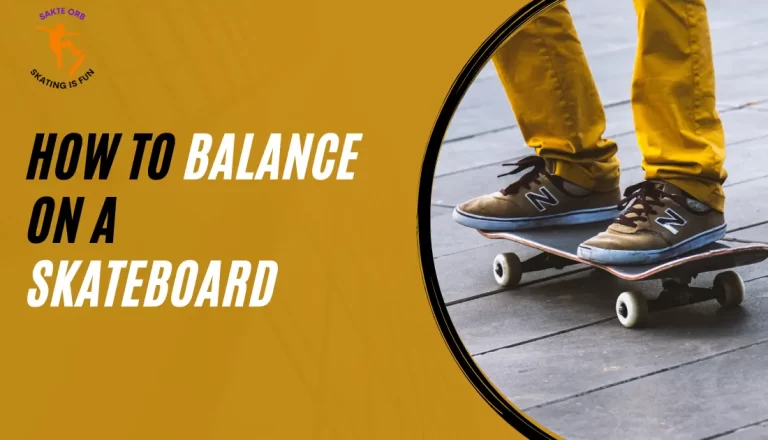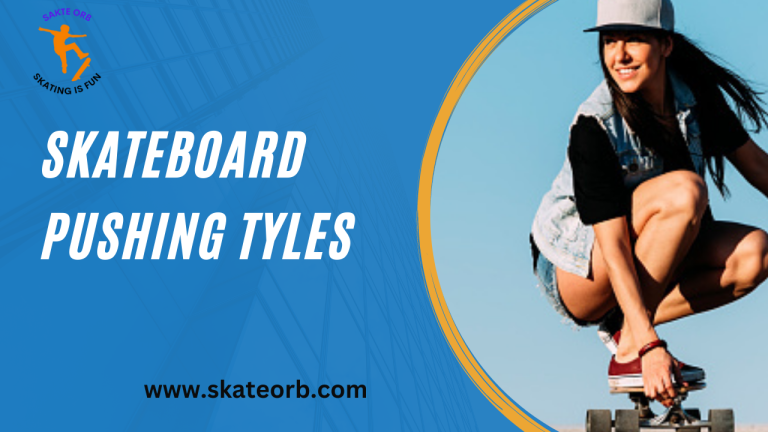How Carving Longboards A Step By Step Beginners Guide for 2024

Carving longboards is a beautiful fusion of art, athleticism and technology. They offer a unique and thrilling way to experience the freedom of movement and the joy of carving down a hill. A good carving longboard is designed to provide the rider with a smooth and stable ride while allowing them to perform tight turns and fluid carving movements. These boards are typically made of high-quality materials such as bamboo, maple and fibreglass, which offer strength, durability and a responsive ride. Whether you’re a seasoned longboarder or just starting, a carving longboard can bring a new level of excitement and adventure to your rides. So, get ready to feel the wind in your hair, the sun on your face, and the thrill of carving down the hills on your stunning carving longboards.
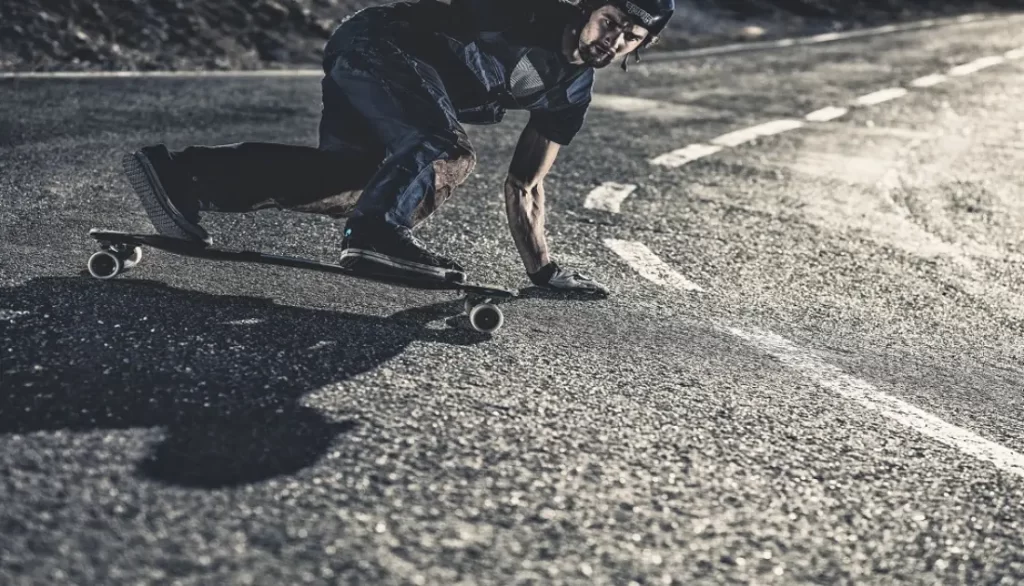
What Things to Consider Choosing the Right Carving Longboards?
Carving longboard is a high-level skill that requires practice, and interest. But sticking only to interest and practice is not enough. For a euphoric carving ride, there must be a right carving longboard that should be adept by all accounts. Besides, appropriate sizes and appealing colours there are some other concerning and pressing points to be activated in your consciousness. Let’s have a meticulous look at significant parts that are crucial for a stunning ride.
Carving longboard deck
Choosing a stunning deck for carving on a longboard can be a fun and exciting experience. Here are some key factors to consider when selecting the perfect deck:
Deck Shape
The shape of the deck will affect the way it carves. A pintail shape is a classic option and provides stability at high speeds, while a drop-through or drop-deck shape allows for deeper and more aggressive carving.
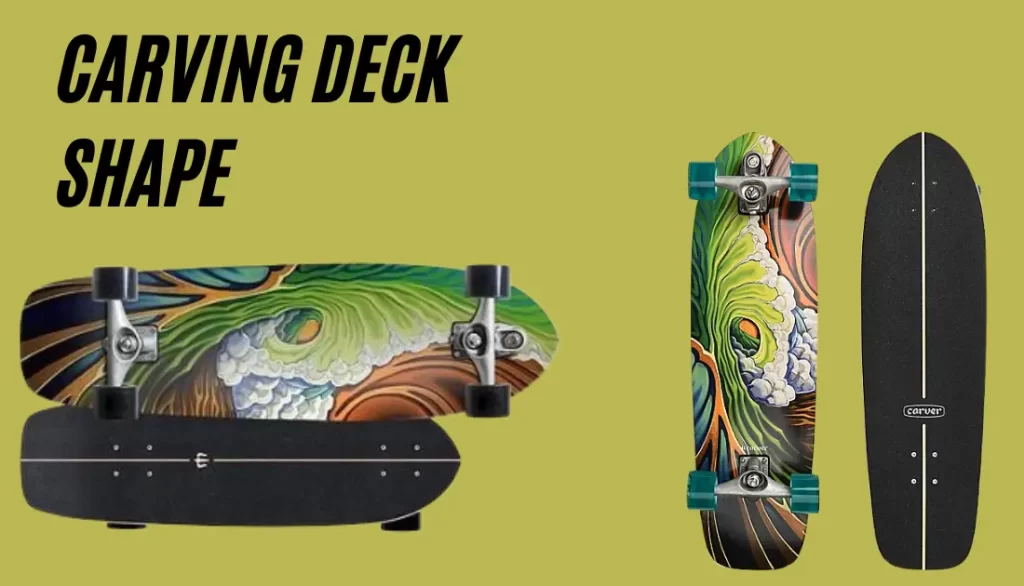
Deck Material
Longboard decks are typically made of either wood, composite materials or a combination of both. Wooden decks offer a classic look and a natural feel, while composite decks are lighter and more durable.
Deck Graphics
The graphics on a longboard deck are a great way to express your personality and style. Look for decks with unique and eye-catching graphics that stand out from the crowd.
Deck Size
The size of the deck will also affect the way it carves. A smaller deck is more manoeuvrable and allows for tighter turns, while a larger deck is more stable and better for high-speed riding.
Deck Flex
Consider the flex of the deck when choosing a longboard for carving. A deck with medium flex is best for most carving styles, but you may prefer a stiffer or softer deck depending on your riding style.
Deck Weight
The weight of the deck can also impact the carving experience. A lighter deck will be easier to manoeuvre, while a heavier deck will provide more stability.
Deck Price
Finally, consider the price of the deck. While higher-priced decks may offer better quality and features, you can still find great options at a more affordable price.
In conclusion, when choosing stunning carving longboard decks, consider factors such as deck shape, material, graphics, size, flex, weight and price to find the perfect deck that fits your needs and style.
Carving longboard wheels
When choosing a wheel for carving on a longboard, there are several factors to consider:
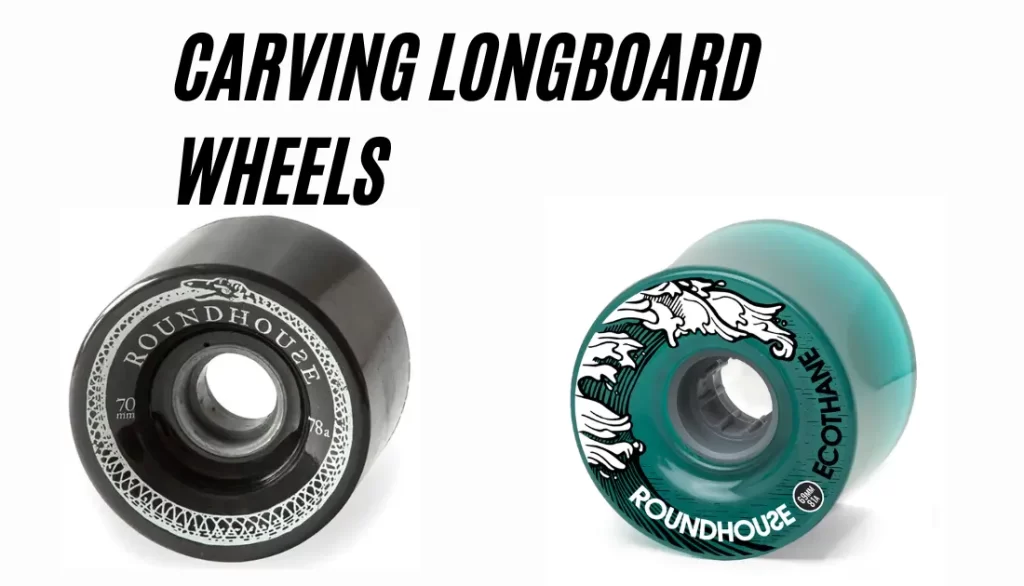
Diameter
A wheel with a larger diameter will offer a smoother ride, while a smaller wheel will be more nimble and responsive. Wheel diameter in the range of 70-75mm is a good choice for carving.
Durometer
Durometer refers to the wheel’s hardness, with a lower number indicating a softer wheel. Soft wheels offer better grip and a smoother ride, while harder wheels are faster and more durable. A durometer rating of around 80A is a good starting point for carving.
Shape
Wheels come in various shapes, with rounded edges being the most common. Rounded edges provide a smooth, predictable ride, making them ideal for carving.
Contact patch
The contact patch is the area of the wheel that comes into contact with the ground. A larger contact patch offers more grip, while a smaller contact patch provides a faster, more nimble ride.
Ceramic Vs. metal wheel
I will suggest always going for the ceramic wheels that utilize ball bearings of ceramic and lasts more than steel wheels. Ceramic bearings authenticate faster spinning than their steel counterparts, at an economical cost.
Ultimately, the best longboard carving wheel will vary based on individual preferences and riding style. It may take some trial and error to find the perfect wheel, but experimenting with different options is all part of the fun!
Longboard carving trucks
Trucks are an essential component of a longboard, and choosing the right trucks for carving is crucial for optimal performance. Here are some factors to consider when choosing trucks for carving:
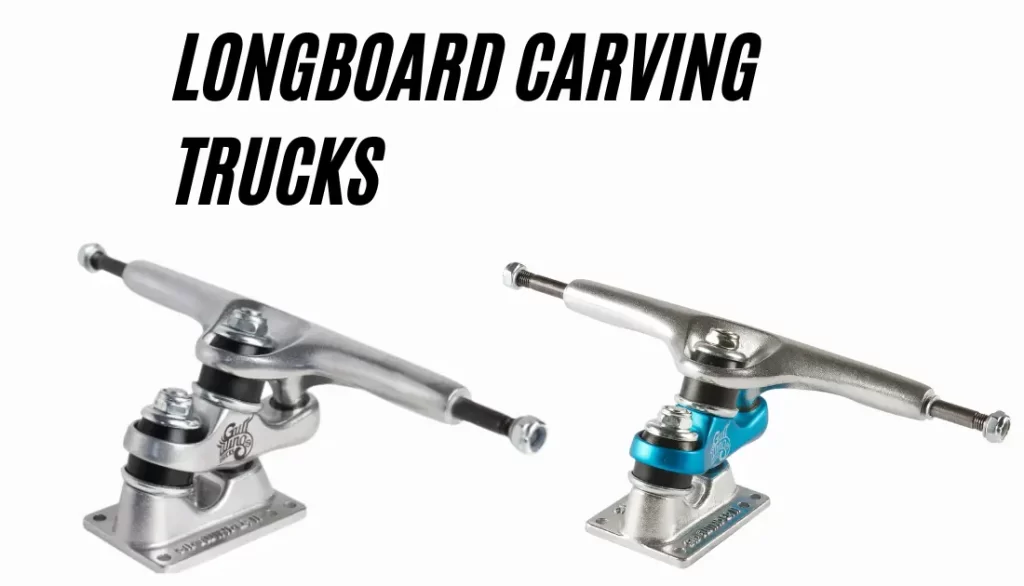
Height
The height of the trucks affects the stability of the board. Higher trucks offer more stability and are better for downhill riding, while lower trucks are more nimble and better for carving. For carving, a truck height between 50-55mm is ideal.
Baseplate angle
The baseplate angle determines the turning capability of the trucks. A lower angle provides a tighter turning radius, while a higher angle offers more stability. For carving, a baseplate angle between 50-55 degrees is recommended.
Hanger width
The hanger width should match the width of your deck. If the hanger is too wide, it will create a loose, unstable feel. If it is too narrow, it will result in a slow, unresponsive ride.
Bushing Shape and Durometer
Bushings are the components that allow the trucks to turn. The shape and durometer of the bushings affect the responsiveness and stability of the trucks. For carving, a cone-shaped bushing with a medium durometer is recommended.
Kingpin tightness
The kingpin is the pivot point of the trucks and can be tightened or loosened to adjust the responsiveness of the trucks. For carving, a tighter kingpin is recommended for more stability, while a looser kingpin provides a more nimble feel.
It is important to remember that the best longboard carving trucks will depend on the individual rider’s style, preferences, and the type of terrain being ridden on. Experimenting with different truck options is a great way to find the right trucks for your carving longboard needs.
What is Longboard Carving?
Longboard carving is a riding style that involves navigating turns and curves on a longboard skateboard. The goal of carving is to create fluid, sweeping turns that resemble the motion of a surfer riding a wave. Carving can be done on various types of terrain, including concrete, asphalt, and even grass.
To carve on a longboard, the rider leans into the turn, using their weight to initiate the turn and their feet to control the direction and speed. A good carving technique requires a combination of balance, body control, and the ability to read the terrain.
Carving on a longboard is a fun and exciting way to experience the thrill of skateboarding while also improving balance, coordination, and overall riding skills. Carving can also be a meditative experience, allowing the rider to focus on the moment and enjoy the sensation of gliding through turns. Hope you can get off the doubt about “what is carving in longboarding’’ with my blog.
In addition to being a fun activity, longboard carving is also a great form of exercise, providing a full-body workout as the rider uses their legs, arms, and core to control the board. Whether you’re a seasoned skater or just starting, carving on a longboard is a great way to challenge yourself and improve your riding skills.
How to Carve on a Longboard?
Carving on a longboard is a fun and exciting way to experience the thrill of skateboarding. This style of riding involves navigating turns and curves on a longboard, to create fluid, sweeping turns that resemble the motion of a surfer riding a wave. To help you get started, here is a comprehensive guide to carving on a longboard:
- Choose the right gear: To carve effectively on a longboard, you’ll need to have the right gear. A good quality deck, trucks, wheels, and bearings are essential for carving. A board with a flexible deck, large wheels, and trucks with a lower baseplate angle will be ideal for carving. Look for wheels with a large diameter and soft durometer (or hardness) for smooth, grippy turns.
- Find a safe place to carve: Always choose a safe and appropriate place to carve. Look for a smooth, flat surface that is free of obstacles and has a gentle slope. Avoid busy streets and crowded areas, and always wear protective gear, such as a helmet, elbow pads, and knee pads.
- Get into the proper stance: The key to carving effectively on a longboard is maintaining proper form. Stand with your feet shoulder-width apart, with your front foot pointing forward and your back foot at a 45-degree angle. Keep your knees slightly bent and your arms relaxed at your sides.
- Start rolling: Push off with one foot and start rolling forward at a slow, steady pace. As you gain speed, start to lean into your turns. Use your back foot to control the direction of the board and your front foot to maintain balance.
- Initiate the turn: As you approach a turn, shift your weight to the inside of the turn and use your back foot to control the direction of the board. Keep your eyes focused on the path ahead and use your arms to maintain balance.
- Keep your weight low: To maintain control while carving, it’s important to keep your weight low and centred over the board. Keep your knees bent and your upper body relaxed to help absorb the bumps and vibrations of the road. When turning, aim to keep your centre of gravity over the board and avoid shifting your weight too far forward or backwards.
- Use your back foot to control speed: The back foot is the primary means of controlling speed while carving. Use your back foot to brake or slow down as needed, and also to control the direction and angle of the turn. As you approach a turn, gently apply pressure to your back foot to initiate the turn.
- Experiment with different types of turns: There are many different types of turns you can make while carving on a longboard, including sweeping turns, tight turns, and combination turns. Experiment with different types of turns to find what works best for you and to improve your carving skills.
- Practice, practice, practice: Carving on a longboard takes time and practice to master. Start with small, gradual turns and gradually work your way up to larger, more challenging turns. As you improve, try riding faster and navigating more difficult terrain.
In a nutshell, carving on a longboard is a fun and exciting way to experience the thrill of skateboarding while also improving your balance, coordination, and overall riding skills. With patience, persistence, and practice, you’ll be carving like a pro in no time! Just remember to always wear protective gear and carve in a safe and appropriate place.
Carving on Skateboard Vs. Carving on Longboard
Carving on a skateboard and carving on a longboard are two different styles of riding that require different skills and techniques. While both involve navigating turns and curves, there are some key differences between carving on a skateboard and carving on a longboard.
Skateboard carving is a more aggressive and fast-paced style of riding that is typically performed on a smaller board. Skateboarders often use quick, tight turns and sharp cuts to navigate through tight spaces, such as a skate park or urban environment. The smaller size of the skateboard makes it easier to manoeuvre, but also requires more precision and control to maintain balance.
On the other hand, longboard carving is a more fluid and relaxed style of riding that is typically performed on a larger board. Longboarders often use sweeping turns and smooth curves to mimic the motion of a surfer riding a wave. The larger size of the longboard provides more stability, making it easier to maintain balance, but also requires a different technique to initiate and control turns.
One of the key differences between skateboard carving and longboard carving is the stance. Skateboarders generally have a more upright stance, with their feet close together and their knees bent. This allows them to easily manoeuvre the board and maintain balance while performing tricks. Longboarders, on the other hand, have a more relaxed stance, with their feet slightly wider apart and their knees slightly bent. This stance allows them to absorb the bumps and vibrations of the road and maintain stability while carving.
Another difference is the type of turns performed. Skateboarders often perform quick, tight turns that require a lot of precision and control. Longboarders, on the other hand, perform sweeping turns that are more relaxed and flowy. This is because the larger size of the longboard allows for a smoother ride and more stability, making it easier to maintain balance while making turns.
To be frank, both carving skating is fun and challenging styles of riding, each with its own unique challenges and benefits
. Skateboard carving is more fast-paced and aggressive, while longboard carving is more fluid and relaxed. Whether you prefer the excitement of skateboard carving or the fluidity of longboard carving, both styles offer a great way to improve your balance, coordination, and overall riding skills.
Conclusion
In conclusion, carving on a longboard is a fun and challenging activity that requires proper technique and practice to master. Choosing the right deck, wheels, and trucks is essential for a successful carving experience. Skateboard carving and longboard carving are both enjoyable styles of riding, but each has its unique challenges and benefits. Skateboard carving is fast-paced and aggressive, while longboard carving is more fluid and relaxed. Whether you’re a seasoned rider or a beginner, carving on a longboard is a great way to improve your balance, coordination, and overall riding skills. Remember to always wear protective gear and ride in a safe area to avoid injuries. Hope selecting adept carving longboards will not be a sophisticated task for you people.
Have fun!
FAQs
What is the difference between carving on a skateboard and carving on a longboard?
Carving on a skateboard is typically more aggressive and fast-paced, with quick, tight turns, while carving on a longboard is more fluid and relaxed, with sweeping turns. Skateboarders generally have a more upright stance, while longboarders have a more relaxed stance.
What kind of deck is best for carving on a longboard?
A deck with a slight concave and a camber profile is best for carving on a longboard. This type of deck provides more grip and stability, making it easier to maintain balance while carving.
What type of wheels is best for carving on a longboard?
Softer, rounder wheels are best for carving on a longboard because they provide a smoother ride and more grip on turns. Harder, sharper wheels are better for fast, tight turns and tricks, but are not as suitable for carving.
How do I know if my trucks are suitable for carving on a longboard?
Trucks that are loose and have a larger turning radius are best for carving on a longboard. This allows for more fluid and relaxed turns while carving.
Can I carve on a skateboard or a longboard anywhere I want?
No, it is important to carve on a skateboard or a longboard in a safe and suitable area. Always wear protective gear and never carve in a crowded or hazardous area. Always obey traffic laws and respect the rights of other riders and pedestrians.
Which is the best carving longboard?
The best carving longboard is one with a slightly concave deck, soft and wheels, and loose trucks with a large turning radius. This setup provides more stability and grip for fluid, relaxed turns while carving.
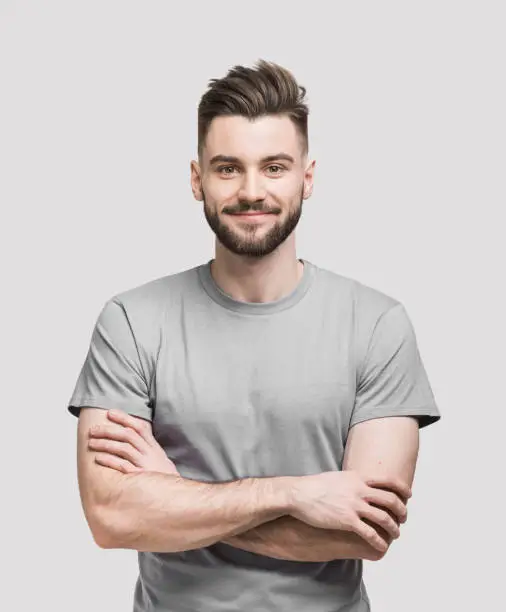
Who Is Roy Harris
Hey there, I’m Roy Harris, and skateboarding is my life.
Growing up in sunny Southern California, I fell head over heels for skateboarding at an early age. From the moment I stepped on a skateboard, I knew it was my calling.
